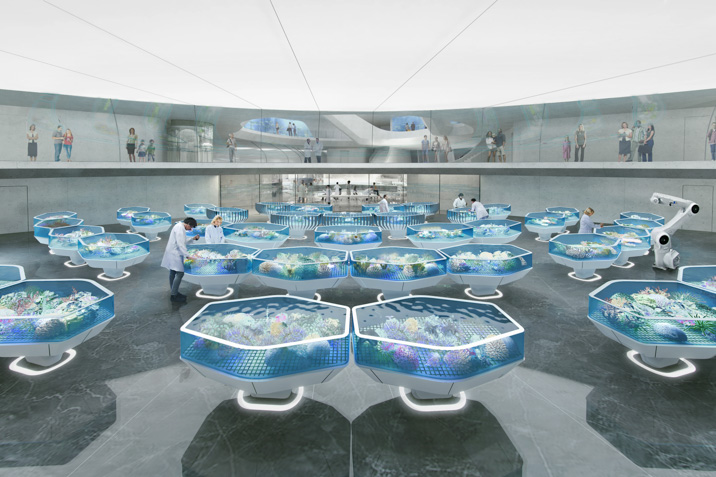
World-first Biobank to be built in QLD wins major sustainability accolade
The Coral Biobank, designed by Contreras Earl Architecture for the Great Barrier Reef Legacy, has been recognised as a leader in sustainable design at the Energy Globe Awards.The Coral Biobank, designed by Contreras Earl Architecture for the Great Barrier Reef Legacy, has been recognised as a leader in sustainable design at the Energy Globe Awards.
Currently in concept phase, the Biobank received a National Award for Sustainability at the Energy Globe Awards. The Biobank, the first of its kind in the world, will eventually preserve more than 800 species of hard corals under threat from coral bleaching caused by climate change.
Arup and Warner Sobek are listed as sustainability consultants for the project. The Biobank will incorporate the latest thinking and technology to provide an integrated working and lab environment for both its employees and the general public.

“The Living Coral Biobank project aims to preserve all 800 hard coral species from around the world by creating a ‘coral ark’ to maintain the living biodiversity of corals and their algal and bacterial symbionts before it’s too late,” says Great Barrier Reef Legacy Managing Director, Dean Miller.
“Coral bleaching poses a serious threat to vulnerable species and reefs around the world, so it’s critical that we safeguard their genetic diversity for their ultimate conservation, and to aid in reef research and restoration efforts.
Contreras Earl Architecture’s Rafael Contreras says the Biobank will serve the community as both an events and educational space, while preserving precious corals.
“While we’ve designed the building with the corals in mind as the primary occupant, the 6,830 sqm multifunction centre will also host exhibition areas, an auditorium and classrooms as well as advanced research and laboratory facilities over four levels,” he says.
“Education and awareness is an important social aspect when we look at sustainable development, and the building’s distinctive sculptural form, inspired by mushroom coral, will help position it as a beacon for environmental awareness, and a centre for hope, learning and wonder.”

Arup Associate Principal, Richard Vincent, says the practice has looked to create a research facility that is a world leader in bioconservation.
“Shaping a better world requires all of us working in the built environment to come together in support of addressing the twin crises of climate change and biodiversity loss. The Arup team is so passionate about this project which perfectly aligns with our sustainability-centric values,” he says.
“With this project, we wanted to raise the benchmark for research facilities and public buildings of significance. Our approach focussed on future-proofing the design; reflecting on the impact of future trends, drivers, building code regulations, carbon budgets, technologies and industry capabilities.
“Our sustainable design embraces the climate of Port Douglas’ environment and facilitates the safeguard, conservation and restoration of the living coral for future generations. The centre harnesses innovative design and engineering to create optimal conditions for coral storage while minimising energy consumption, adopting circular economy principles and targeting a zero-carbon footprint.”
To learn more about the project, visit coralbiobank.org.
- Popular Articles






